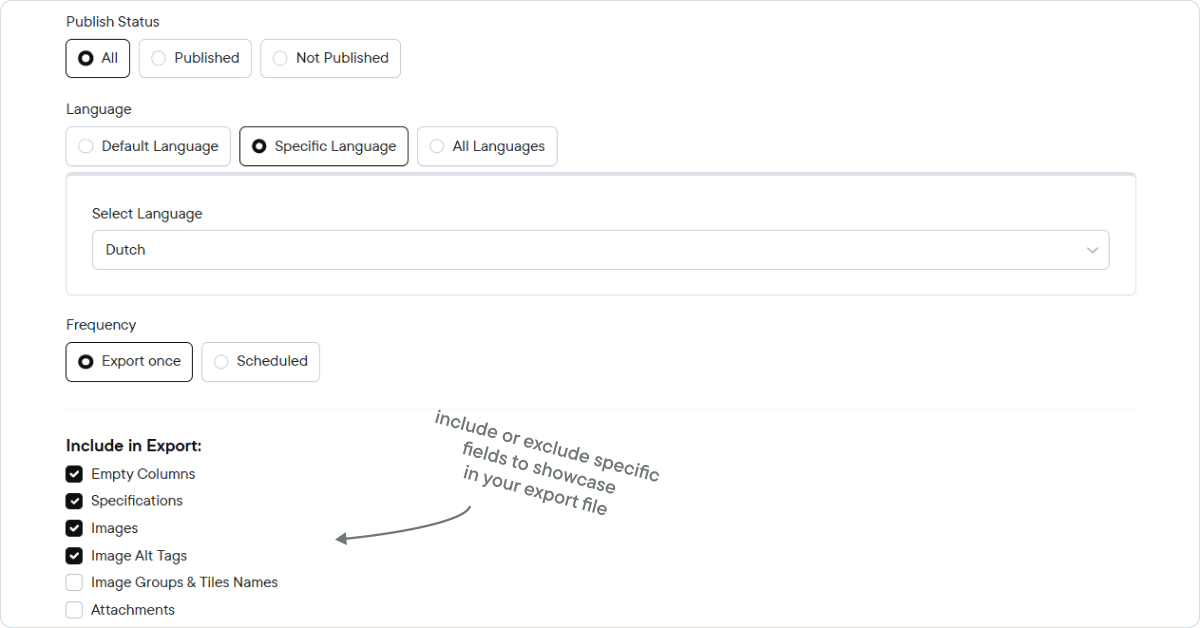KatanaPIM's Export functionality is designed to create downloadable .xlsx or .csv files containing product data. You can tailor the set of exported products based on your specific needs, ensuring only relevant data is included.
KatanaPIM offers three distinct export options, each serving different purposes, or "goals":
Selecting the appropriate export type based on your specific requirements ensures a tailored export process.
With the Products export, you can export essential product data tailored to your needs. Select products, apply filters, and customize settings with ease.




The Variant relationships export allows you to export basic fields related to your products variations. The export file will include the Child products ''name'', ''extenal key'' and SKU, the Parent ''name'' and ''external key'' and the Granparent ''name'' and ''external key'' (see example below).
http://marketing.katanapim.com/variant-relationships.xlsx


The Pricebook Export feature in our PIM system allows users to efficiently export customized pricebook data for use in various applications such as ERP systems, marketplaces, sales channels, or for internal analysis. This feature provides flexibility in how data is exported, ensuring that the exported data aligns with your business needs.



